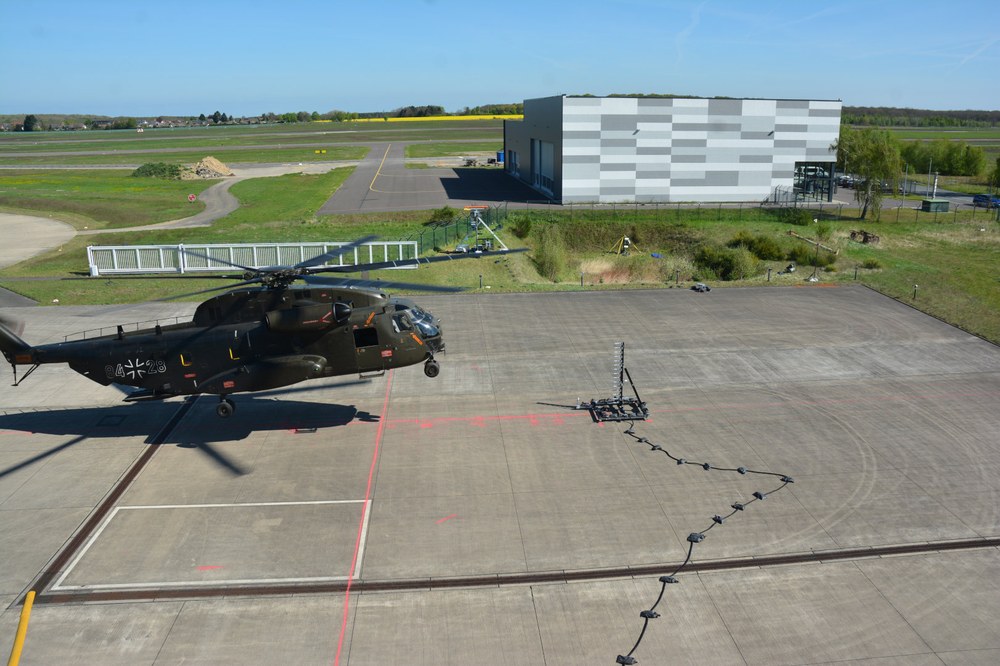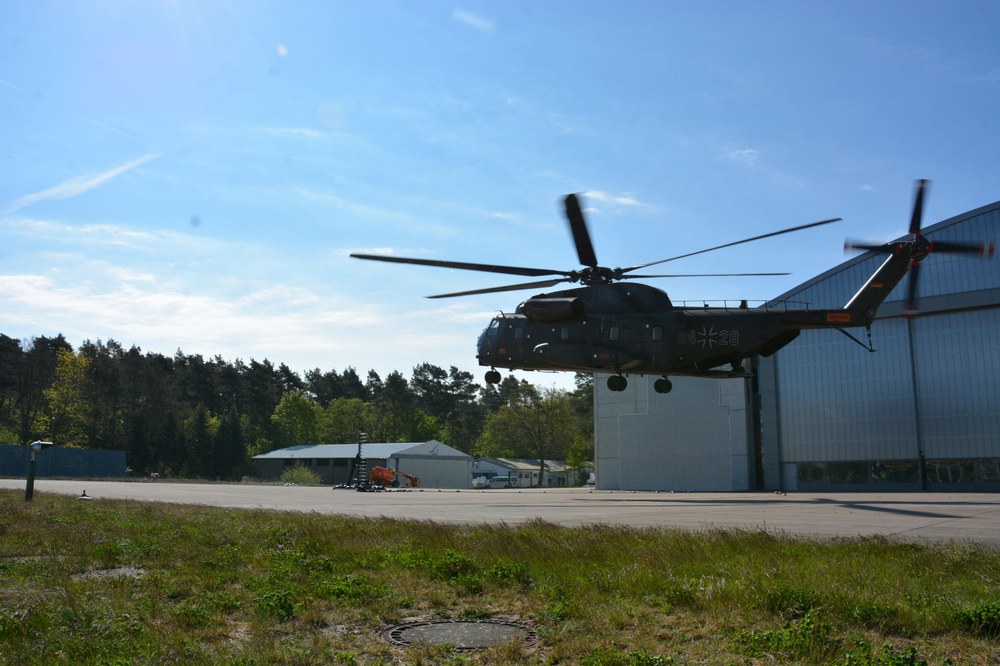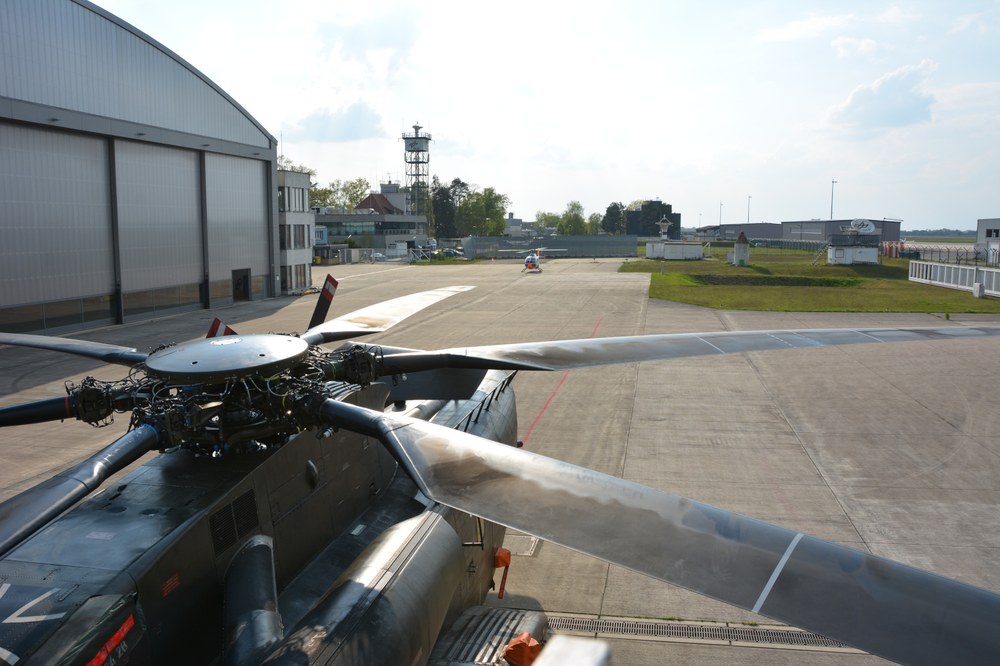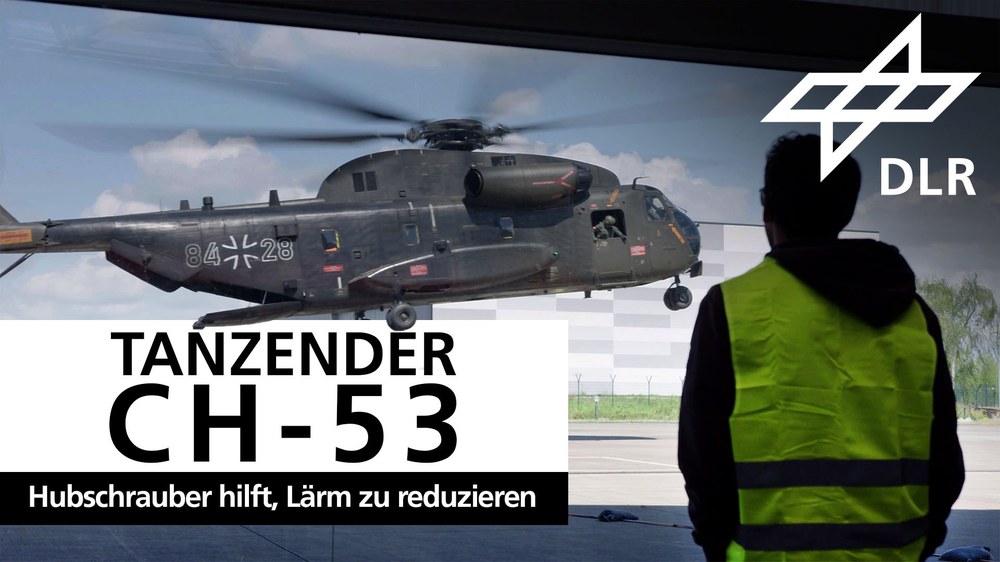'Dancing' helicopter helps reduce noise



- DLR conducts flight test with a CH-53G helicopter.
- The findings could help reduce noise and vibrations.
- Focus: Aeronautics
Researchers at the German Aerospace Center (Deutsches Zentrum für Luft- und Raumfahrt; DLR) in Göttingen have visualised the main cause of noise from a heavyweight helicopter in flight. To do this, they conducted flight tests with a CH-53G of the German Armed Forces by letting the helicopter 'dance' close to the ground.
The Sikorsky CH-53G is a large transport helicopter and can carry an internal payload of up to 5500 kilograms. The helicopter had a take-off weight of 14 tonnes for the tests at DLR's Braunschweig site. The helicopter flew at a height of two to twelve metres above the ground in hovering flight. Three high-speed cameras recorded the resulting air vortices on the six rotor blades from different angles, while two additional cameras determined the position of the CH-53G with high precision.

Video: DLR Institute of Aerodynamics and Flow Technology - 'Dancing' helicopter helps reduce noise
Your consent to the storage of data ('cookies') is required for the playback of this video on Youtube.com. You can view and change your current data storage settings at any time under privacy.
Blade tip vortices cause noise
A helicopter is able to take off and land vertically thanks to its rotor. However, this is also responsible for the noise and vibrations in flight. "Almost all the noise from a helicopter is aerodynamic noise. A large part of it is caused by the blade tip vortices," says Markus Raffel, Head of the Helicopters Department at the DLR Institute of Aerodynamics and Flow Technology in Göttingen.
Blade tip vortices occur at the outer end of a rotor blade, caused by the negative pressure on the upper side and positive pressure on the lower side. This accelerates the air and generates a concentrated vortex behind the rotor blade tip. The noise is caused when the vortex of one rotor blade collides with another rotor blade. These vortices not only cause the typical 'carpet beater' noise, but also lead to vibrations in the helicopter and decrease the comfort of the passengers.
Special measuring technique makes air turbulence visible
The helicopter researchers at DLR in Göttingen are already pioneers in the field of visualising helicopter noise. In 2013, they succeeded in visualising the responsible air vortices in flight for the first time. The visualisation uses a special optical measurement technique.
The Background Oriented Schlieren Method (BOS) was developed at DLR in Göttingen in 2000. Light is refracted in the air by variations in density. Everyone is familiar with this phenomenon from the shimmering over some road surfaces on a hot summer's day. To investigate the blade tip vortices during hovering flight, a large-scale artificial dot pattern was installed at the DLR Braunschweig hangar, and the movement of the dots due to light refraction was observed.
Near the ground, blade tip vortices play a special role because air turbulence can stir up ground material in sandy areas or in snow, which can obstruct the pilot’s view. In this test, the DLR researchers in Göttingen investigated 'scale effects' and were able to show that the vortices are not the same on a large helicopter such as the CH-53G as they are on a smaller model. The findings open up new possibilities for making future helicopters quieter and more comfortable. "We want the vortices on the rotor blades to be as weak as possible and to dissipate quickly," Raffel says. This could be achieved, for example, by giving the rotor blades a curved shape, as is already the case in smaller helicopter models such as the Airbus Helicopters H160. This shape is also based on DLR research.
The tests took place as part of the DLR Urban Rescue project. The CH-53G was provided by the Bundeswehr Technical and Airworthiness Center for Aircraft (Wehrtechnische Dienststelle für Luftfahrzeuge und Luftfahrtgerät).
